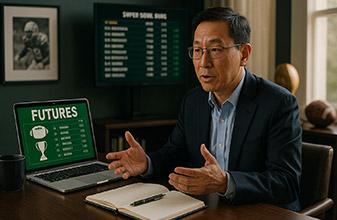Decoding Poker Tells: How to Read Your Opponents Like a Book

Poker, beneath its mathematical and strategic nature, is also a game of psychology. In the world of poker, the ability to discover your opponent's intentions and emotions through non-verbal cues is the hallmark of a true player.
Similarly, understanding your opponent's psychological state can boost your chances of success when you play blackjack online. Like poker, though subtler, observing betting patterns and recognizing subtle tells can give you an edge in an online blackjack game. This makes online blackjack not just about the cards but also about the intricate human behavior.
These cues, called "tells," can help you determine whether your opponents' hands are strong or weak. While becoming a master of reading poker demands experience and keen observation, having a basic understanding makes your decision-making at the table easier.
The Role of Observation in Poker
The ability to read the opponents in a poker game is similar to having a pair of X-ray glasses to see what the cards hide. This skill differentiates amateurs from professionals. Every twitch, glance, or slight movement in body positioning reveals these important details that only detailed observers can catch.
To reach this level of proficiency in poker requires a lot of practice and awareness, which eventually becomes second nature. This is why you must embrace observation as a primary weapon on the journey to becoming a pro.
Body Language and Facial Expression
Whenever you are playing poker, you should take into account how a person sits or gestures and what kind of facial expressions they have. These gestures indicate what card their hands may hold.
These nonverbal cues, known as poker tells, reveal confidence, bluff, or excitement over a good hand. Key indicators include an open body posture, which signifies power, while crossed arms are a sign of nervousness.
Facial expressions such as raised eyebrows and biting lips often show that a person is in a good mood and, sometimes, in an uncomfortable situation.
By reading your competitors' minds and intentions, the game becomes more challenging, but it gives you the upper hand at the poker table. Hence, keep on with healthy alertness and use these slight and minor gestures to get through every game.
Common Poker Tells and Their Meanings
While poker tells can be highly subtle and context-dependent, some common patterns exist that players can leverage to gain an edge at the table. These include;
- The Shaking Hand: A shaking hand is a telltale sign of a nervous or excited individual. It is often associated with a weak hand or a bluff. As such, it is necessary to consider the player's behavior and what they have already done in the game before taking action.
- Staring at Chips: Opponents watching their chips carefully might mean that they are making a big bet, expecting to win. On the other hand, peeking at chips occasionally or out of nervousness could indicate indecision or a desire to bluff.
- Covering the Mouth: This famous gesture is done by putting a finger or touching the face to hide suggestive gestures or verbal clues. While it could illustrate strength or bluffing, it is essential to understand that this might not always be the case.
- The "Weak Means Strong" Tell: Some players deliberately exhibit behaviors that show weakness when they hold strong hands to deceive their opponents. They do this through various methods, like acting uninterested, sighing, or being relaxed without any worries. Alternatively, seemingly overreacting reactions may be an indication of a weak hand to throw opponents off balance.
- Timing Tells: The rate at which the player makes decisions may be one thing that shows the strength of their hand. Decisiveness can be a sign of confidence and directive thinking, whereas being undecided or seemingly chaser-about-odds may imply doubt or uncertainty.
Advanced Strategies for Reading Poker Tells
While recognizing basic poker tells can offer a solid foundation, experienced players often employ more advanced strategies to get maximum value from their observations. These include;
- Cluster Analysis: Instead of concentrating on individual aspects of the game, analyze the overall behavioral pattern or clusters to determine the quality of a player's character. For instance, a player who shows signs of anxiety during a high-stakes round might be bluffing in the long run.
- Baseline Assessment: Establishing a baseline for each opponent's behavior is crucial to accurately determine gestures. Analyze how one may behave in various situations like when they have a strong or weak hand compared to normal behavior. This will help determine the importance of playing a "tell."
- Contextual Understanding: Context is the most important factor in assessing poker tells. Before making a decision, evaluate your opponent’s talking speed, stack size, previous rounds, and mannerisms. What could be a trustworthy tell against one could be a disservice to the other.
- Reverse Tells: Sneaky players tend to manipulate signs to deceive opponents or twist the meaning of conventional tells. Beware of opponents who use common tells to their advantage. Be ready to adjust your strategies, as they are likely to be the best players in the game.











Please log in or register to leave a comment